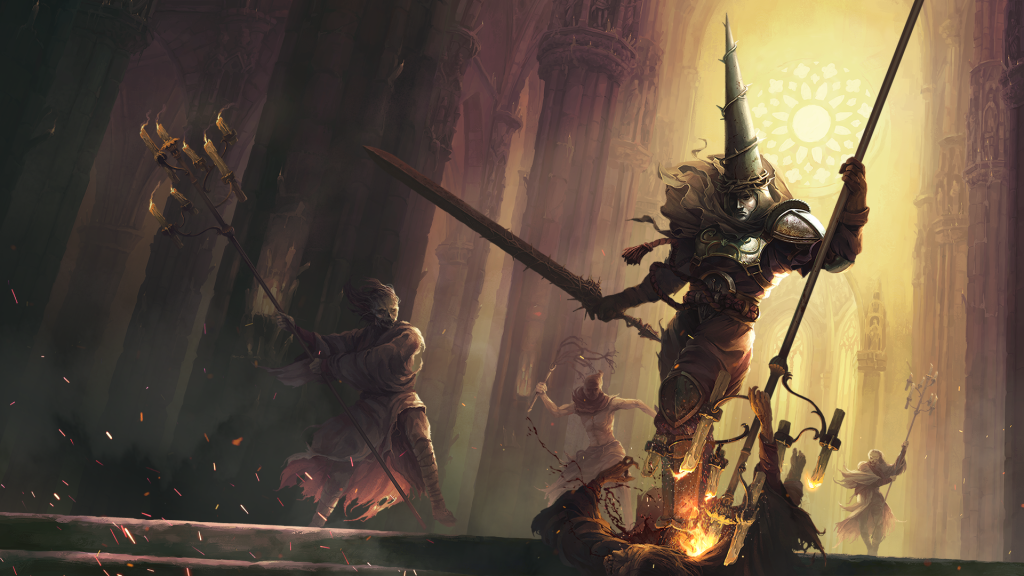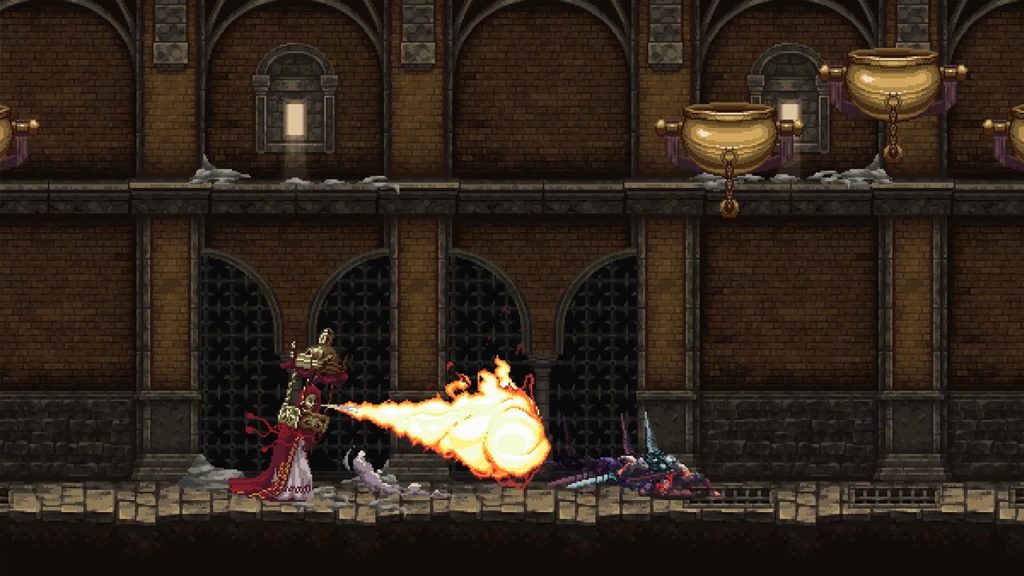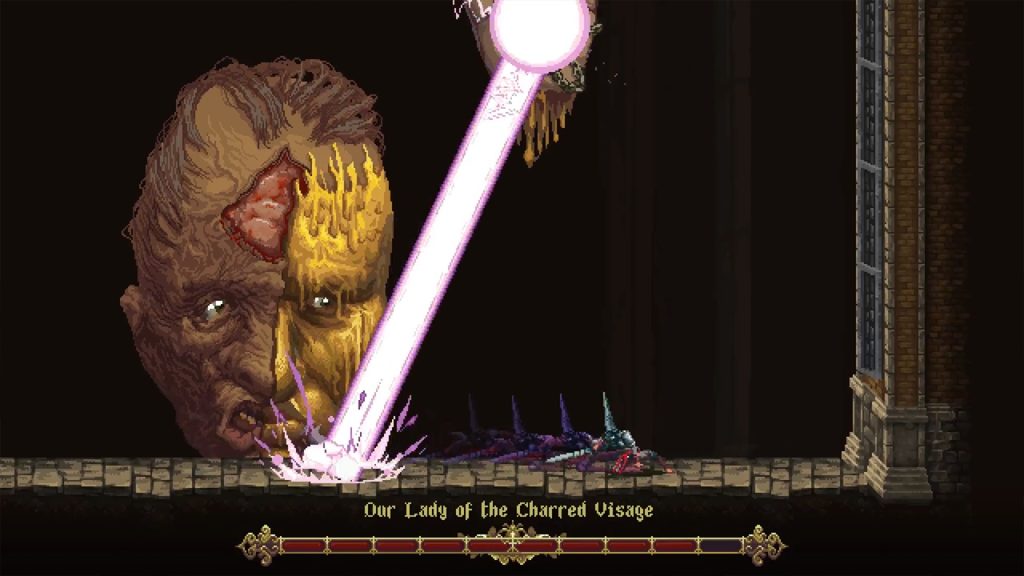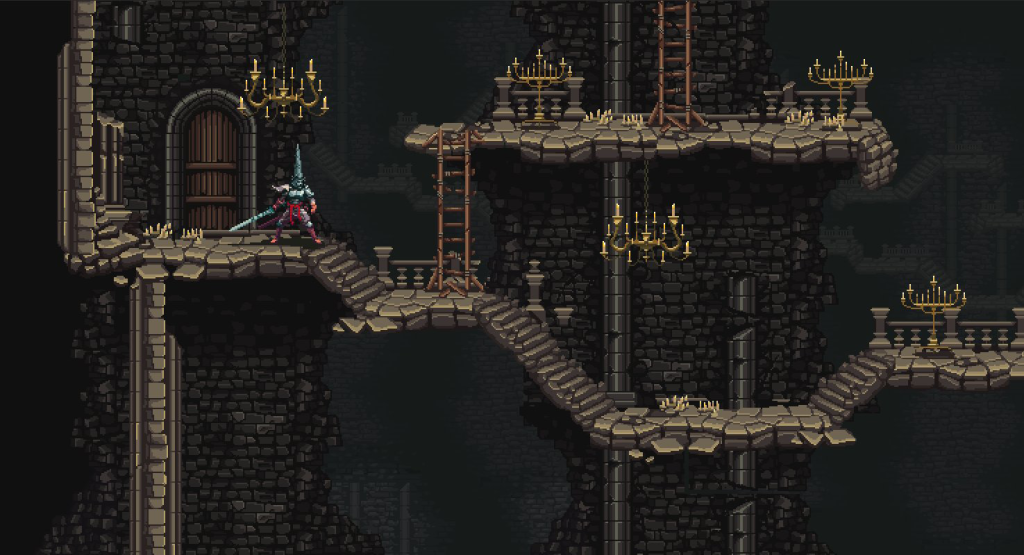Blasphemous is a 2D side-scrolling Metroidvania featuring jaw-dropping pixel art, challenging combat, and ambiguous storytelling all set against the backdrop of the deliciously grim, Gothic fantasy, Catholicism-inspired hellscape of Cvstodia. Only the second title from developer The Game Kitchen, Blasphemous is a deep and rewarding adventure that left me wanting more in the best possible way.
You play as The Penitent One, a warrior who wields a sword made of guilt itself against the many tortured souls and horrid beasts spawned from a curse known only as The Miracle. You’ll fight disturbing bosses, explore uniquely themed environments, bask in the sweet relief of opening shortcuts, stumble across secrets, meet austere characters, and, of course, die. A lot.
Thankfully, The Penitent One is trapped in an endless cycle of rebirth, which means death is never truly the end. Instead, you will respawn at the nearest Prie Dieu, with your fervour bar (mana, essentially) and the rate at which you gain Tears of Atonement (the currency you get from killing enemies) both lessened. A guilt fragment appears where you died, and if you return to claim it, you will cleanse yourself of guilt restoring everything to normal. You can also pay penitence by visiting certain shrines and defeating bosses. You don’t lose your Tears of Atonement on death, but you generate multiple guilt fragments as you keep dying which compounds the negative effects.
The Penitent One has plenty of tools at their disposal to help avoid death. Combat at a basic level is a matter of attacking and parrying with your sword as well as dodging enemy attacks, however, there is depth to it as you progress. You will quickly acquire a prayer, which are abilities that cost fervour. You can only equip one of these at a time, but they can be swapped out whenever you like. Prayers grant you helpful, temporary powers like ‘Seguiriya to Your Eyes like Stars’ which increases the speed of your attacks, or ‘Taranto to My Sister’ which causes lightning to strike in an area around The Penitent One. There are also Rosary Beads, which are smaller buffs that do things like increase your defense or resistance to fire attacks, or even allow you to see enemy health or reduce the cooldown on dodging. Both Prayers and Rosary Beads are hidden throughout the world, making exploration all the more worthwhile.
The Penitent One will also come across Mea Culpa shrines, which increase the damage dealt with your sword, but also unlock the next tier of abilities. These abilities are one of the main things you’ll spend your hard-earned Tears of Atonement on, granting you special moves like a charged strike, ranged attack and upward lunge. There are a set number of these shrines to be found in the game, so coming across one always feels momentous.
Right from the outset combat and movement feel great in Blasphemous. Combining various sword attacks, dodging, and jumping to take down a wide variety of challenging enemy types all in a solid 60 fps was a blast from beginning to end. It also captures that feeling of earned progression perfectly. Allowing you to come back to an area that you really struggled with at the beginning after several hours worth of upgrades and just demolishing everything is always satisfying.
I did experience a number of visual bugs, some of which are small things I’ve been assured will be patched before release, others I’m not so sure. A number of times in boss fights things would get a little awkward. The boss would go off-screen entirely but would still be able to attack me. Other times this worked in my favour, the boss would turn around so it was attacking off-screen and I could get a bunch of safe hits in, totally unscathed. Another time I died just after I landed the killing blow on a boss because I could no longer move but the boss was still attacking. I was able to run back from the nearest Prie Dieu and continue with no issues, but it seems like a strange oversight for you to still take damage when you can’t move. Nothing too persistent, and for the most part, the bosses are fantastic.
The story of Blasphemous is mostly conveyed through dialogue with a handful of characters, but there are also a small number of cutscenes that are an absolute joy to behold. The pixel art featured in these is just as wondrous as the moment-to-moment gameplay, and they always come at a good time to break up the pace. The voice acting is great, for the most part, but there are two or three characters that don’t meet the standard. This was particularly noticeable due to how important these roles were to the story; it lessened the impact of what would otherwise have been really cool moments. This is no doubt due to budgetary constraints but remains a shame nonetheless.
Each area in Blasphemous has its own gimmick, whether it’s wind that blows one direction then the other, or nuns who intermittently ring bells that let off a chain of AoE attacks you have to dodge. There’s nothing particularly groundbreaking about any of these mechanics, and there were times where they crossed over from fun into frustrating, but they definitely helped make each environment feel unique.
The map ticks most of the boxes you would expect from a Metroidvania, individual rooms, doorways, and areas are clearly defined, as is your current location. There are a few features bewilderingly absent, however. For example, while things like Mea Culpa shrines and Prie Dieus are marked on the map once discovered, important NPCs or collectibles you may have come across are not. Trying to find these again after hours of exploring elsewhere is an unnecessary pain. Similarly, there’s no completion percentage for each area to indicate where your last few remaining collectibles might be hiding.
One of the most important indicators of a good Metroidvania for me is how enjoyable getting to 100% is once you’ve completed the main story. Despite the issues I had with the map, getting to 100% in Blasphemous is an absolute blast. There are plenty of characters to meet, puzzles to solve, and upgrades to collect that have nothing to do with the main quest, which meant I was still finding new stuff hours after beating the final boss.
Blasphemous successfully manages to carve out its own place among the pantheon of fantastic modern indie Metroidvanias like Hollow Knight, Ori and the Blind Forest, and Guacamelee, with consistently stunning enemy and environment design, wonderfully paced exploration, deep and challenging combat, and a tone that is all it’s own.
Rating: 9/10
Blasphemous was reviewed using a review code provided by the publisher.




